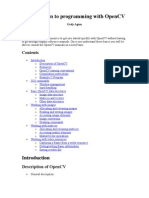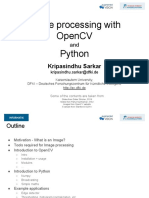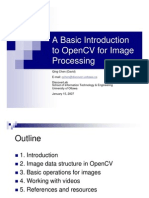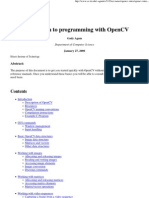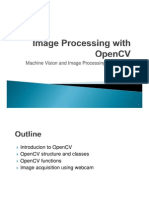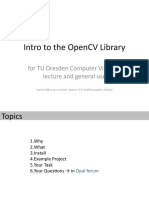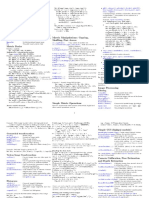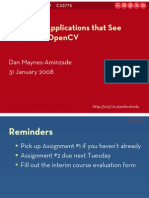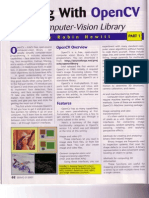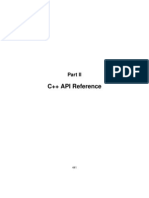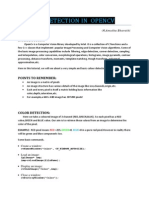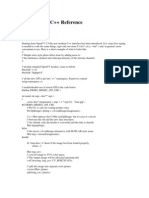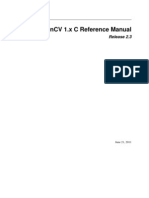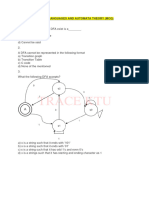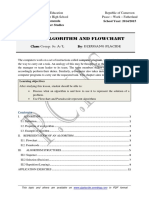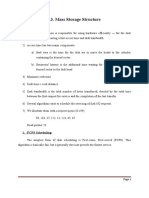0% found this document useful (0 votes)
181 views35 pagesAppendix 2 Introduction To Opencv: Speaker: 黃世勳
The document is an introduction to OpenCV, an open source computer vision library. It discusses what OpenCV is, why it was created, its library design, and how to install and set up an OpenCV development environment in Microsoft Visual Studio. It also provides examples of using OpenCV to load, display, and copy images. The main OpenCV libraries are described including functions for image processing, computer vision algorithms, GUI capabilities, and more.
Uploaded by
朱葉丹Copyright
© Attribution Non-Commercial (BY-NC)
We take content rights seriously. If you suspect this is your content, claim it here.
Available Formats
Download as PPT, PDF, TXT or read online on Scribd
0% found this document useful (0 votes)
181 views35 pagesAppendix 2 Introduction To Opencv: Speaker: 黃世勳
The document is an introduction to OpenCV, an open source computer vision library. It discusses what OpenCV is, why it was created, its library design, and how to install and set up an OpenCV development environment in Microsoft Visual Studio. It also provides examples of using OpenCV to load, display, and copy images. The main OpenCV libraries are described including functions for image processing, computer vision algorithms, GUI capabilities, and more.
Uploaded by
朱葉丹Copyright
© Attribution Non-Commercial (BY-NC)
We take content rights seriously. If you suspect this is your content, claim it here.
Available Formats
Download as PPT, PDF, TXT or read online on Scribd
/ 35

